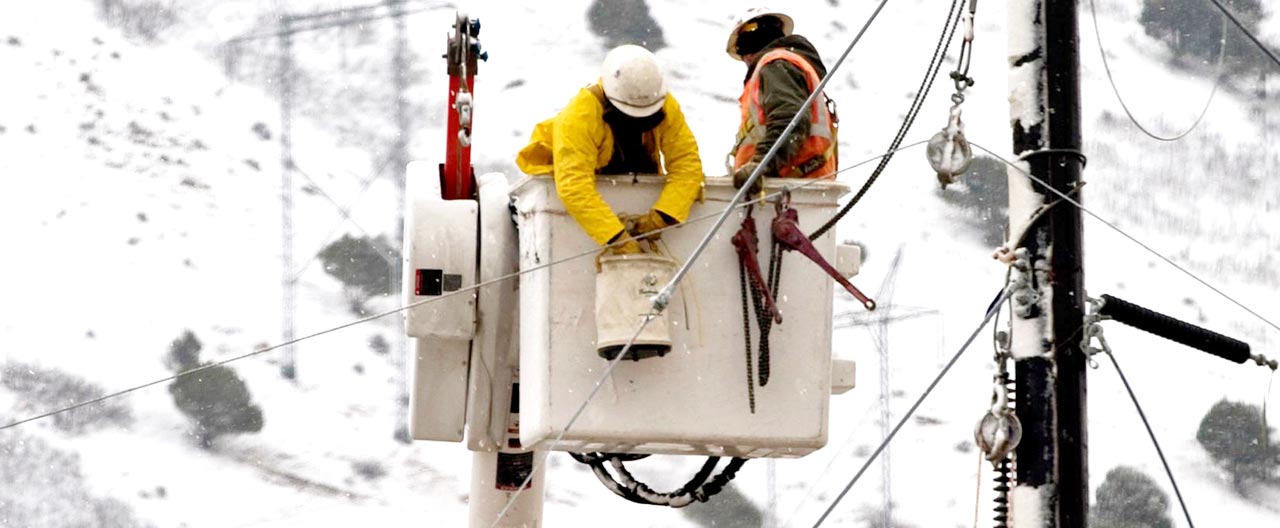Chubb HealthBeat
Chubb’s Claims department includes a team of dedicated registered nurse professionals with extensive experience helping businesses and organizations address health and safety issues. Our nursing team also supports employees as they recover from injury and illness — and return to work. In the spirit of promoting safe and healthy workplaces, our medical specialists developed this edition of Chubb HealthBeat to help your business and employees understand and prevent illnesses and injuries caused by exposure to cold temperatures.
Exposure to cold and winter weather can endanger employees
Maintaining body temperature while on the job isn’t just a matter of comfort. It’s also essential for health and safety. When exposed to cold air, employees can lose internal body temperature and suffer from freezing extremities. These conditions can result in loss of coordination, impaired judgment, tissue damage, and even death.
Fortunately, employers and employees can work together to mitigate the risks of illness and injury caused by cold temperatures—even in the harshest conditions. Engineering and operational controls, suitable clothing, and workplace training can go a long way toward protecting employees who are exposed to cold temperatures.
Occupations and industries at greater risk
Any employee exposed to cold temperatures, regardless of industry or occupation, is at risk for cold-related injuries and illnesses. Sectors that require employees to work outside during cold weather or winter months are at higher risk. These include:
- Construction
- Agriculture, including farming, ranching, and landscaping
- Utilities
- Transportation
- Law enforcement and emergency response
- Commercial fishing1
Employees who work in artificially cold settings — such as cold storage warehouses and refrigerated catering facilities — are also at risk. Wind and moisture can worsen the effects of cold temperatures.
Acclimation to cold environments can help some people naturally resist the impact of cold temperatures. This also means that employees who aren’t used to cold temperatures can be at greater risk for cold-related illnesses and injuries. People can experience cold-related medical conditions even when the temperature is above freezing.
The two most serious cold-related conditions
Employers and employees alike should be especially aware of the following two dangerous cold-related conditions:
- Hypothermia — When exposed to cold temperatures — especially over a prolonged period of time — the body cannot adequately compensate for lost heat. A person becomes hypothermic when their body temperature drops below 95°F. Initially someone with hypothermia may shiver, but the shivering may subside as body temperature falls further. Other symptoms include fatigue, loss of coordination, confusion and disorientation, slurred speech, dilated pupils, slowing pulse and breathing, blue skin, and loss of consciousness.2
- Frostbite — This type of cold-related injury is caused when the skin and underlying tissues freeze. At its most severe, frostbite can cause permanent damage and even result in amputation. Exposed areas of skin—such as cheeks, nose, ears, and chin—as well as fingers and toes are especially susceptible to frostbite. Signs of frostbite include a prickling sensation or numbness, skin that appears waxy or hard, and skin that turns red, white, grayish-yellow, or otherwise discolors.3
Any employee showing the symptoms of either of these conditions should move to a warm location, such as a heated vehicle, and seek immediate medical attention. Call 911 for the most severe symptoms of hypothermia.
When waiting for emergency medical care, be cautious about taking additional steps beyond providing warm fluids (not alcohol) to drink and dry clothes or blankets to someone suffering from cold-related medical conditions. Do not rub or apply hot water to frozen extremities or walk on frostbitten feet or toes, which can cause further damage.
Steps employers can take toward cold weather safety
While the Occupational Health and Safety Administration (OSHA) does not provide specific standards for working in cold environments, employers must generally take steps to prevent workplace and employment hazards, including those caused by exposure to cold temperatures.4 To prevent hypothermia, frostbite, and other cold-related medical conditions, employers should:
- Provide effective engineering controls — Employers can invest in a range of engineering controls to limit the impact of cold temperatures, such as providing warming shelters, outdoor radiant heaters, and windbreaks. In addition, insulating the handles of metal equipment and tools can help protect hands.
- Establish safe workplace practices — Engineering controls should be matched by practices and policies that protect workers from injuries and illnesses caused by cold temperatures. For example, workers in cold conditions should be provided opportunities to take breaks to warm up. Make sure tasks are scheduled during the warmest parts of the day — or in warmer months. Consider assigning employees to work in pairs as part of a buddy system so that they can monitor each other for signs of cold stress.
- Train employees to work safely — Employees who work in cold weather and facilities should be trained to identify and prevent illnesses and injuries caused by cold temperatures. Training should cover safe work practices, the symptoms of hypothermia and frostbite, and how to provide first aid.
Safety tips for employees when working in cold environments
Employees can take a number of steps that will help prevent cold-related injuries and illnesses, including:
- Wear the right clothing — Bundle up for cold-weather work in multiple layers, avoiding tight clothing that can restrict circulation. Wear insulated, waterproof boots, a hat, and gloves. In the severest weather, consider covering your face as well.
- Take warming breaks — Monitor yourself (and your co-workers) and take breaks in warming shelters or vehicles to maintain your body temperature. Warm up with a hot, non-alcoholic beverage.
- Prepare your first aid kit — On site or while traveling to job locations, carry a first aid kit that includes a thermometer for checking body temperature and chemical hot packs. Your emergency gear should also include blankets and a change of clothing, if needed.
Resources
OSHA — Cold Stress Guide
Insights and expertise








This document is advisory in nature and is offered as a resource to be used together with your professional insurance advisors in maintaining a loss prevention program. It is an overview only, and is not intended as a substitute for consultation with your insurance broker, or for legal, engineering or other professional advice.
Chubb is the marketing name used to refer to subsidiaries of Chubb Limited providing insurance and related services. For a list of these subsidiaries, please visit our website at www.chubb.com. Insurance provided by ACE American Insurance Company and its U.S. based Chubb underwriting company affiliates. All products may not be available in all states. This communication contains product summaries only. Coverage is subject to the language of the policies as actually issued. Surplus lines insurance sold only through licensed surplus lines producers. Chubb, 202 Hall's Mill Road, Whitehouse Station, NJ 08889-1600.










